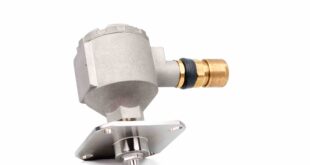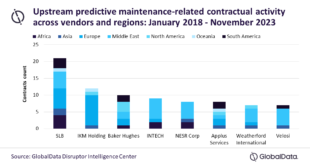Achieving operational efficiencies with the Atomiton Digital Terminal solution
Midstream terminals, downstream refineries and chemicals plants face common challenges of complex operations environments without real-time intelligence and prediction.
With Industrial IoT software, facilities can gain operations visibility and reduce energy costs.
Within the mid- and downstream sectors in oil and gas, reducing energy use is high on all corporate agendas.
But in an industry with many constraints and variables that utilises a huge amount of legacy equipment, achieving energy optimisation can be problematic.
Understanding how to optimise energy is dependent on knowing how to answer several questions.
In typical refining or processing plants, there are many complex processes and operations running at the same time. Many users are unaware which specific assets or equipment are using how much energy, but more importantly they do not know what activities such as heating are consuming energy and how much.
Without this level of operational intelligence, it is hard to know what can be done to reduce energy use.
Another challenge is changes in energy needs, and the ability to determine the lowest cost source of energy with these changes.
Refineries and terminals have great potential for high gains and cost savings due to multiple areas of energy usage. Knowing what impact activities such as heating, mixing, loading, and unloading will have on energy costs is critical in optimising energy usage. One of the key elements for reducing energy is to identify and reduce unnecessary activities.
Optimisation in action
One customer of Atomiton is Royal Vopak, a 400-year-old Dutch tank storage company with over 13,000 tanks within 67 terminals globally. They produce a myriad of products from coconut oil to crude oil and diesel to turpentine that they store.
The problem they faced was increasing energy costs due to utility companies raising their peak energy rates. They chose to deploy the Atomiton Digital Terminal solution to better understand and manage their energy costs.
The Atomiton operating stack (A-stack) creates digital profiles of assets (equipment) and activities, as well as monitoring energy usage in real-time.
The software continuously predicts energy load and optimises activity schedules using artificial intelligence within operations to prioritise operations constraints, minimise unnecessary activities and orchestrate optimal schedules to reduce energy costs.
The results were remarkable with peak energy reduced by 25% and energy costs reduced by 20%. On top of that there was a positive impact to labour productivity of 5% and an additional billing revenue was at 7%. This was due to digitising meter readings that saved the need to send teams out three times a day for manual readings.
Every 30 minutes now they get these readings, which are more accurate and go straight into the ERP system, where specific costs can be assigned to customers.
Without software, tracking thousands of variables in real-time and making adjustments dynamically is nearly impossible for terminal operators.
For instance, imagine having to increase the temperature in a single one-million-gallon tank by five degrees while understanding the energy needed to accomplish this. Then multiply this by the multitude of tanks across the terminal.
But with software that leverages advanced algorithms and models to track thousands of variables in real time, understanding energy use by individual pieces of equipment or individual activities or processes is greatly simplified and automated.
Another Atomiton customer had challenges in the refinery for loading and unloading. They needed to send out terminal texts around pipe heating elements prior to flowing products knowing that if they did not preheat these pipes that there was a chance of clogging them.
Clogged pipes creates a major disruption to operations as it is extremely time-consuming to clean the pipes and costs tens of thousands of dollars to fix, not to mention the havoc it plays on scheduling.
The solution was to digitise each pipe to understand their heating and cooling profiles, and utilise machine learning to understand the energy usage for loading and unloading, as well as the time it takes to get the pipes heated to the right level.
For example, a pipe may be 200 feet, so the model is built to understand how long it will take that pipe to get to a certain temperature taking into consideration the variables. With this information, the process can be automated and then optimised.
Given when loading will take place, the pipe heating can be started in the right timeframe and then stopped based on the cooling profile of the pipe. Reducing those unnecessary activities is one of the easiest ways to reduce costs.
Optimising peak load
Each of the energy optimisation opportunities requires a slightly different methodology.
One of the most important is optimising the peak load utilisation of electricity. In order to optimise for energy, you need to track the energy consumption. One of the most common ways is tracking the energy consumption by the meter.
However, this is an after the fact reading and there is very little actionable intelligence you can derive out of this. The second most common way is to track energy consumption by the equipment. This is a much more useful, but currently, most of this information is used either for protection purposes or for chargeback purposes.
In contrast, the third way is tracking energy by activities or processes, in real-time. Energy is considered as an input-output, two processes along with other factors like equipment, assets and consumables.
In tracking energy consumption to activities and processes, this information is utilised to build energy profiles for activities such as loading, unloading and heating.
An energy profile provides the ability to predict the energy consumption for any activity under a load. This prediction is derived by applying machine learning to historical data that has been gathered by tracking the energy consumption of past activities.
Energy profiles are a general concept, so they can be applied not only to electricity utilisation, but also to steam or gas consumption.
In addition to energy profiles, understanding start time and run time of activities is important. Activities may have certain conditions that must be met as part of operations.
There may be predefined conditions, such as the need to perform mixing after heating. Activities may be set by a pre-defined schedule.
Activities may be triggered either manually or could be driven by external events. Some triggers, specifically the manual external event triggers, are ad-hoc and much less predictable, but can be incorporated into the models.
Using conditions and schedule information to get information about the start and run time of activities and combining them with the energy profiles leads to predictions on how much energy is going to be consumed at any given point of time.
There are three categories of activities. Constant activities are always happening and consuming energy. Fixed activities must happen no matter what.
Flexible activities are ones that may be changed, with flexibility in start time and run time. Flexible activities are the focus for optimisation and energy consumption at any point in time.
The software examines flexible activities, which contain acceptable time windows for running, and the energy requirements at any given point of time. Based on the optimisation algorithm, an optimised schedule is built. This optimised schedule automatically reduces the peak load, which could lead to significant cost savings.
By building energy profiles and using predictive algorithms to optimise activities, the solution allows customers to better manage their energy consumption and costs.
Making energy optimisation a reality
What is needed to optimise energy consumption? Data is first needed to provide input to building profiles and models. This data can come from various sources such as sensors in equipment or operational systems, using existing sensors or adding on additional sensors if additional data sources are necessary.
Next, the data needs to be contextualised into the environment. Digital models representing the physical world of operations, are built utilising the multiple sources of data which are synthesised into the context of operations.
For example, one data source provides information on a mixing activity, while another provides power meter readings connected to the mixers. These different data sources are synthesised to map energy consumption to the activity.
With the digital models that contain contextualised information, the software can run prediction algorithms to build energy profiles, or optimisation algorithms for optimising activity scheduling. This operations intelligence can be integrated with existing operational systems as executable schedules and actions, and even automated to take action, if desired.
Scheduling assets and knowing when to run activities has a huge positive impact to energy reduction. With dozens of possible variables, it is impossible to adjust energy sourcing manually.
Dynamically adjusting energy sourcing reduces energy costs and delivers real savings. Atomiton Digital Terminal solution makes energy optimisation a reality today.
 Engineer News Network The ultimate online news and information resource for today’s engineer
Engineer News Network The ultimate online news and information resource for today’s engineer


